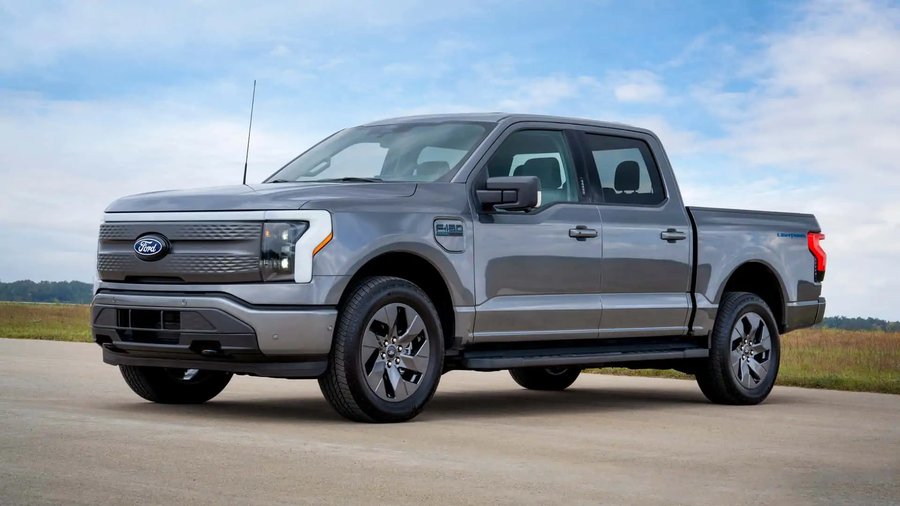Ford CEO says the Chinese EV industry is biggest threat to his business

Ford’s CEO Jim Farley first sounded the warning back in May, after his visit to China, but it’s been quietly happening in the background for far longer; Chinese electric vehicles, or EVs, are gobbling up the Chinese domestic market. They may even be on pace to do the same globally. In a Wall Street Journal interview, Farley described the situation as an "existential threat" to Ford, highlighting the rapid pace at which Chinese automakers are advancing in the EV race.
Not a few years ago, China was a net importer of automobiles, serving as a highly lucrative destination for many international manufacturers including Japanese, German, US, and even UK companies. In 2022, however, the Chinese economy was exporting nearly as many cars by-value as it was importing. Not only that, but that market share of foreign firms selling within China was rapidly being consumed by a slew of young, nimble, and domestic challengers. It is abundantly clear that China is on-pace to continue expanding, with no clear indicator of where its zenith might be. Chinese EV manufacturers are making inroads into Europe, Asia, Africa, and even South America, with the Wall Street Journal reporting as many as 20% of auto sales in Mexico this year being of Chinese make and model.
So how is China doing it?
There are several forces driving these changes, both propelling Chinese firms forward and keeping the brakes pressed firmly on more established manufacturers. In China, there is a general lack of regulation and bureaucratic red tape on start-up auto companies, which allows them to more easily experiment with and integrate Artificial Intelligence and other helpful technological innovations that make their cars stand out among competitors. There is also a general advantage enjoyed by China against other more mature economies, one of PPP, or Purchase Power Parity.
A comparatively cheap labor pool allows every step in making a car to be less expensive, giving a competitive edge. Consider just some of the many steps where paying lower wages saves money which can be reflected in lower prices for the end user: There is R&D for new technologies, design for the cars themselves, building the actual plants, operating expenses and management salaries, not to mention materials and assembly line manufacturing wages, maintenance and upgrades installed by skilled technicians, marketing and dealerships, and even they actual act of transporting of the final product, all which can be done with less cost thanks to the powerful economic advantage of PPP.
This is all before considering the fact that the Chinese government and business sector are very closely tied together, one being almost the economic policy extension of the other. Bloomberg reported that over the last 15 years China’s EV makers have received over $230 Billion in grants and subsidies, which further allows them to undercut and undermine other car manufacturers.
An uncertain future for old giants
While all of these advantages may be throwing gas into the engine of Chinese carmakers, it only paints half of the picture. China was quick to secure rare earth mineral rights around the world and invest in their extraction, ensuring a steady supply of lithium and other components for their tech-heavy, cost-light cars.
In contrast, many mature manufacturing firms are or have in the past struggled to similarly secure their Lithium stockpiles and supply chains, stalling their initial jump into EVs. Labor in these economies is comparatively expensive, regulations are tougher, and of course for many, there are also friction with Unions to contend with, eating time and energy which might have been used to innovate.
There is also the question of infrastructure. While China has, seemingly, invested in simple and elegant charging solutions for their modern cities (if not quite so effective in rural areas), in much of Europe and the United States in particular, EV charging infrastructure is more of a mixed bag, if not a nightmare.
It also doesn’t help that many manufacturers have chosen to mitigate these challenges by the old adage ‘bigger is better’. Large SUVs and Trucks have increasingly become the staple of the American market, despite their added cost to build, high prices, and generally lower fuel/charge mileage.
Jim Farley acknowledged in the Wall Street Journal article that "executing to a Chinese standard is going to be the most important priority" Meanwhile, EV development and sales have stalled for the old giants, with high wages, high prices, charging woes, and the consequences of previously all but abandoning the small and medium car market all proving to be significant barriers to the speed of future growth.
The silver lining
At present, Chinese EVs are unable to penetrate the US and much of the European market due to tariffs and a lack of a distribution and dealership network to make these cars an option. There is also a lingering stigma against Chinese manufacturing in general for being shoddy, cheap, and often unreliable. Concerns relating to privacy and information collection from the CCP also dissuade many from considering Chinese EVs, even in markets where they are available. Nevertheless, Farley warns that these barriers may not be sufficient to keep the Chinese EV industry from dominating the global market in the long term.
The urgency felt by Ford and other U.S. and European automakers is palpable. According to Farley, the Chinese EV industry is the 'biggest threat' to his business, highlighting the pressing need for established automakers to rethink their strategies and adapt quickly to the changing landscape.
